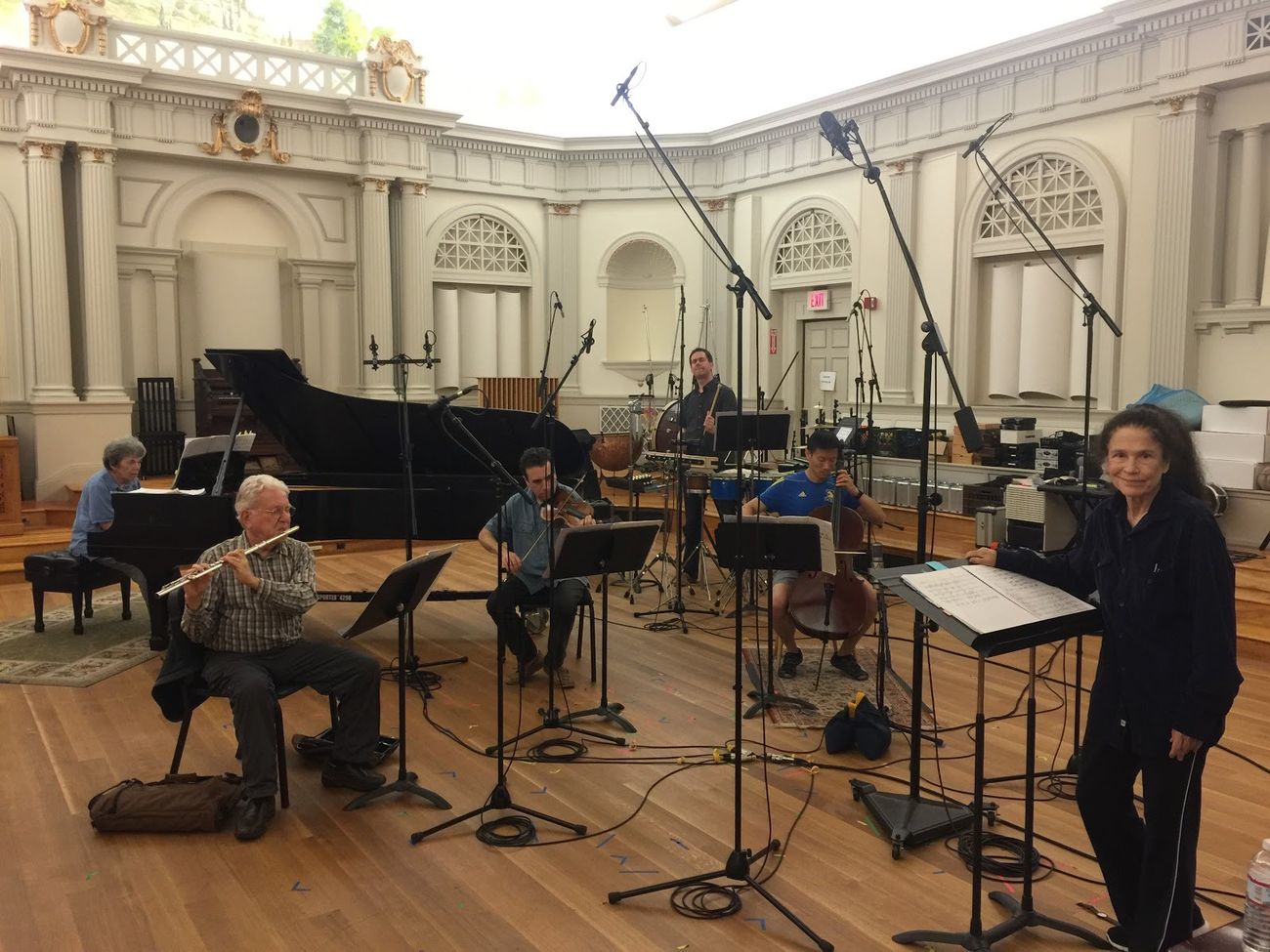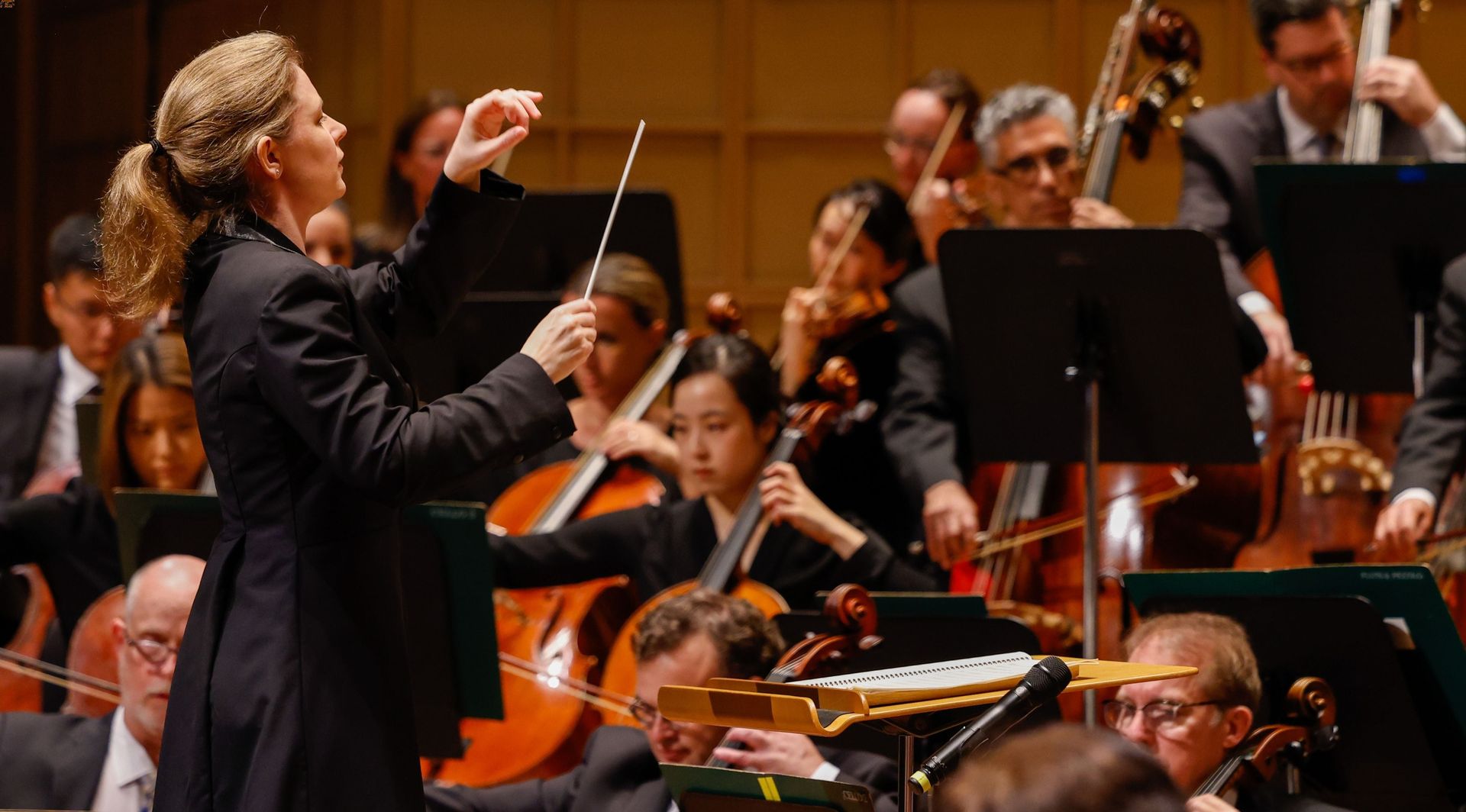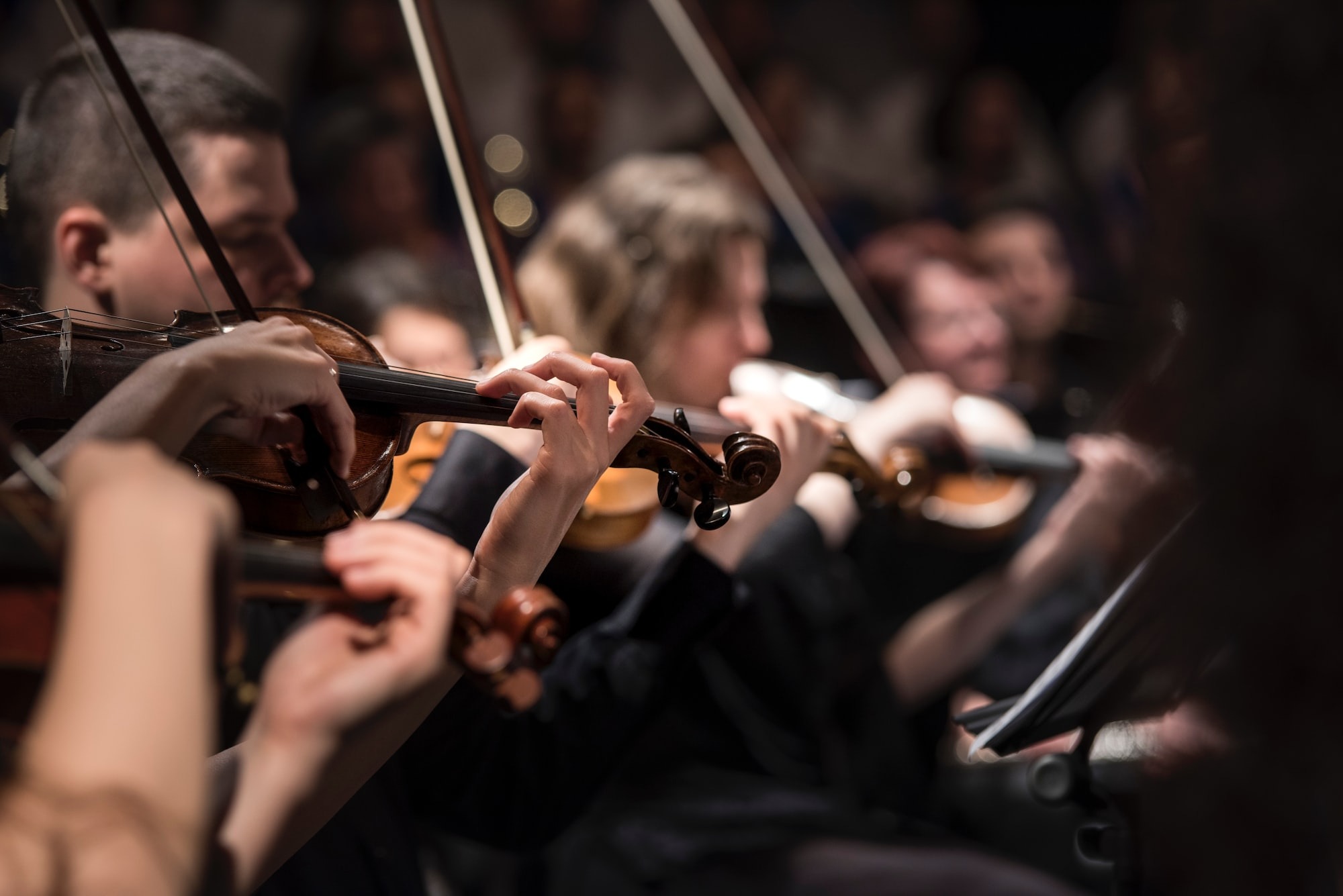Home>Events & Info>Chamber Music>How To Practice Chamber Music


Chamber Music
How To Practice Chamber Music
Published: January 4, 2024
Learn the best ways to practice chamber music and enhance your musical skills. Explore effective techniques and strategies for mastering chamber music performances.
(Many of the links in this article redirect to a specific reviewed product. Your purchase of these products through affiliate links helps to generate commission for AudioLover.com, at no extra cost. Learn more)
Table of Contents
Introduction
Welcome to the world of chamber music! Chamber music is a genre of classical music that is performed by a small group of musicians, typically consisting of one player per part. It has a rich and diverse repertoire, ranging from beautiful string quartets to intricate piano trios and captivating wind ensembles. Chamber music offers a unique opportunity for musicians to engage in intimate collaboration, allowing each instrument to shine individually while blending harmoniously as a group.
Practicing chamber music requires not only technical prowess but also a deep understanding of musical interplay and communication. It is a highly rewarding endeavor that can lead to profound musical experiences and personal growth. Whether you are a seasoned musician looking to join a chamber group or a novice searching for guidance on how to get started, this article will provide you with valuable insights and tips on how to practice chamber music effectively.
Throughout this article, we will explore various aspects of practicing chamber music, including finding a group, establishing roles and responsibilities, selecting repertoire, rehearsal techniques, communication and listening, balancing dynamics and blend, interpretation and expression, dealing with challenges, and performance tips. By delving into these topics, you will gain a comprehensive understanding of how to navigate the intricate world of chamber music and unleash your full musical potential.
Finding a Chamber Music Group
One of the first steps in practicing chamber music is finding a compatible group of musicians to collaborate with. There are several avenues you can explore to find fellow musicians who share your passion for chamber music:
- Music schools and conservatories: These institutions are filled with talented musicians who may be interested in forming a chamber group. Attend concerts and recitals, and reach out to potential collaborators to gauge their interest.
- Community music organizations: Many cities have community music organizations that bring together musicians of all levels. These groups often have chamber music programs or can connect you with like-minded musicians.
- Online platforms: Websites and forums dedicated to musicians, such as Meetup or musician-specific social media groups, can be a great way to find chamber music enthusiasts in your area.
When searching for a chamber music group, keep in mind the importance of compatibility. Look for musicians who have a similar level of technical proficiency and musical approach. Remember, chamber music involves close collaboration, so it is crucial to find individuals who can work well together.
Once you have found potential group members, it is essential to have an initial meeting to gauge compatibility and discuss your goals and expectations. This initial conversation will help you determine if you are a good fit for each other both musically and personally.
If you are unable to find a pre-existing group, you have the option of forming your own. Reach out to fellow musicians who are interested in chamber music and gather for sight-reading sessions or informal jam sessions. This can be a fruitful way to explore different musical combinations and find the right group dynamic.
Remember, finding a chamber music group may take time and experimentation. Don’t be discouraged if your first attempts don’t yield the desired results. Persevere, be open-minded, and keep searching until you find the perfect group of musicians to embark on this musical journey with.
Establishing Roles and Responsibilities
Once you have assembled a chamber music group, it is important to establish clear roles and responsibilities among the members. This will ensure smooth collaboration and effective practice sessions. Here are some key aspects to consider:
- Leadership: Determine who will take on the leadership role within the group. This person will be responsible for organizing rehearsals, setting goals, and keeping the group focused and motivated. While it is common for the first violinist or pianist to assume this role, it ultimately depends on the dynamics and strengths of the group.
- Assigning parts: Assemble the repertoire and distribute the parts among the group members. Consider each musician’s strengths and preferences when assigning parts. It is crucial for each member to feel comfortable and confident with their assigned role.
- Attendance and commitment: Discuss expectations regarding attendance and commitment to rehearsals and performances. Establish a clear policy regarding unexcused absences and make-up sessions. Dedication and punctuality are essential for the success of the group.
- Communication: Establish effective communication channels within the group, such as a shared online calendar or group chat. Regularly communicate about rehearsal schedules, repertoire choices, and any changes or updates. Open and honest communication is key to avoiding misunderstandings and fostering a positive and productive working environment.
- Contributions: Encourage each member to contribute creatively to the interpretation and musical decisions of the group. Emphasize the importance of active listening, sharing ideas, and finding a collective vision for the performance of the music.
By establishing clear roles and responsibilities, you create a structure that promotes collaboration, accountability, and mutual respect within the chamber music group. Remember, flexibility and open-mindedness are also important, as the dynamics of a group may evolve over time. Regularly revisit and adapt these roles and responsibilities to ensure they continue to meet the needs and aspirations of the group.
Selecting Repertoire
Choosing the right repertoire is a crucial step in practicing chamber music. The repertoire will shape the group’s musical journey and determine the level of challenge and enjoyment throughout the process. Here are some factors to consider when selecting repertoire:
- Group dynamics: Understand the strengths and limitations of your group members. Consider their technical abilities, range of experience, and musical preferences. Choose repertoire that plays to their strengths and allows them to shine individually and as a cohesive ensemble.
- Balanced programming: Aim for a diverse and balanced program that showcases different styles, periods, and genres. Mix well-known masterpieces with lesser-known gems to provide variety and keep the performances engaging for both the musicians and the audience.
- Challenging but achievable: Select repertoire that pushes the boundaries of the group’s abilities without overwhelming them. It should present a level of challenge that motivates growth but is within reach of dedicated practice.
- Personal connection: Choose music that resonates with each group member on a personal level. This emotional connection will translate into a more passionate and expressive performance.
- Consider the instrumentation: Pay attention to the specific instrumentation of your group. Some pieces may be better suited for certain ensembles, while others may allow for more flexibility. Explore different combinations and experiment with repertoire that highlights the unique qualities of your ensemble.
Research and explore various chamber music repertoire resources, such as chamber music anthologies, websites, and recordings. Attend concerts and listen to recordings to get a sense of the pieces you are considering. Additionally, consult with experienced musicians, teachers, and chamber music coaches for their recommendations and insights.
It is also important to consider the feasibility of the repertoire within the context of your group’s rehearsal schedule and performance commitments. Take into account the time required to learn and refine each piece, as well as the suitability of the repertoire for the venues and audiences you will be performing for.
Ultimately, the repertoire selection should inspire and challenge your chamber music group while allowing for growth and artistic expression. A thoughtfully curated repertoire will contribute to a fulfilling and rewarding practice experience.
Rehearsal Techniques
Effective rehearsal techniques are essential for productive and efficient chamber music practice. Here are some tips to optimize your rehearsal sessions:
- Preparation: Come to rehearsals prepared. Familiarize yourself with your part and the overall musical structure of the piece beforehand. This will allow you to focus on ensemble dynamics and musical interpretation during rehearsal.
- Start with a warm-up: Begin each rehearsal with a warm-up routine to synchronize rhythm, intonation, and blend. This can include scales, arpeggios, or other technical exercises that target specific challenges in the repertoire.
- Sectional rehearsals: Divide the music into sections and focus on one section at a time. Work on technical difficulties, intonation, and rhythmic accuracy within each section before integrating them into the full ensemble.
- Score study: Study the full score of the piece, not just your own part. Understanding the interactions between different instruments will enhance your overall comprehension and interpretation of the music.
- Experiment with different interpretations: Encourage the exploration of different interpretive choices. Experiment with variations in tempo, dynamics, articulation, and phrasing to find the most compelling and cohesive interpretation for the group.
- Record and listen: Record your rehearsals and listen back to them. This will help you identify areas that need improvement and provide valuable feedback for self-assessment.
- Repetition and refinement: Repeat challenging sections and passages until they become comfortable and musically polished. Be patient and persistent in working through difficult passages, breaking them down into smaller components if necessary.
- Feedback and communication: Foster an environment of open communication and constructive feedback. Encourage each member to express their ideas, concerns, and suggestions for improvement. Effective communication is key to achieving a unified and cohesive interpretation.
- Recordings and reference performances: Listen to professional recordings and attend live performances of the repertoire you are working on. This will provide inspiration and assist in shaping your interpretation and understanding of the piece.
- Rehearse performance elements: In addition to the musical aspects, rehearse performance elements such as stage presence, bowing gestures, and communication with the audience. These elements contribute to a polished and engaging performance.
Remember, rehearsals should be both focused and enjoyable. Strive for a balance between discipline and creativity, allowing for flexibility and spontaneity while maintaining a structured approach. With consistent dedication and effective rehearsal techniques, your chamber music group will thrive and evolve.
Communication and Listening
Effective communication and active listening are essential components of successful chamber music practice. Here are some key points to consider regarding communication and listening within your group:
- Active listening: Cultivate the skill of active listening throughout rehearsals. Pay close attention to the music and the other members of your group. Take in their musical choices, dynamics, and phrasing, and respond accordingly. This will create a cohesive and synchronized performance.
- Non-verbal communication: Develop non-verbal cues and gestures to communicate with the other members of your ensemble. Use eye contact, body language, and subtle gestures to indicate dynamics, tempo changes, and entrances. This silent communication can greatly enhance musical cohesion.
- Verbal communication: Encourage open and respectful communication among group members. Share ideas, express concerns, and provide constructive feedback. Effective verbal communication ensures that everyone is on the same page and working towards a common musical vision.
- Musical dialogue: Treat chamber music as a musical conversation. Engage in a thoughtful and dynamic exchange of ideas with your fellow musicians. Respond to their musical gestures, react to their interpretations, and contribute your own musical voice to create a vibrant musical dialogue.
- Interpretive discussions: Set aside time during rehearsals for interpretive discussions. Explore different musical ideas, experiment with different phrasing options, and collectively decide on the interpretation that best serves the music. This collaborative approach fosters a sense of ownership and unity within the group.
- Respectful feedback: When providing feedback, prioritize respect and tact. Frame your suggestions in a positive and constructive manner. Remember to focus on the music and the desired outcome rather than criticizing individual members. This will foster a supportive and encouraging environment.
- Mindful communication: Be mindful of your own communication style and the impact it may have on others. Be attentive to each member’s ideas and concerns, and encourage a balanced participation from all members. Ensure that everyone feels heard and valued in the decision-making process.
- Celebrate achievements: Acknowledge and celebrate the achievements and progress of your fellow musicians. Foster a positive and encouraging atmosphere that nurtures motivation and enthusiasm for growth and improvement.
- Adaptability: Be prepared to adapt your playing and interpretation based on the feedback and suggestions from the group. Remain open-minded and flexible, allowing for collaborative exploration and artistic growth.
Effective communication and active listening are the foundation of a cohesive and successful chamber music group. By fostering a supportive and collaborative environment, you can create harmonious music that truly resonates with both the performers and the audience.
Balancing Dynamics and Blend
Creating a balanced and cohesive sound is crucial in chamber music performance. Balancing dynamics and achieving a harmonious blend among the instruments can greatly enhance the overall musical expression. Here are some tips for effectively balancing dynamics and achieving a seamless blend:
- Listening and adjusting: Actively listen to the sound of your group and adjust your playing accordingly. Be aware of your own volume and timbre in relation to the other instruments. Continuously adapt and make subtle adjustments to achieve a balanced and well-blended sound.
- Controlled dynamics: Practice controlling your dynamics by utilizing variations in bow pressure, speed, and articulation. Experiment with different levels of intensity to create contrast and shape within the music. Aim for a unified dynamic approach among the group members.
- Balance through phrasing: Pay attention to the phrasing and musical structure of the piece. Highlight the melodic lines and important voices while allowing the accompanying parts to provide support. The art of balancing dynamics lies in understanding the musical context and shaping each phrase accordingly.
- Blend through intonation: Achieving a seamless blend also involves careful attention to intonation. Ensuring precise intonation within each interval and chord will contribute to a unified and well-blended sound. Listen for any tuning discrepancies and adjust your pitch as necessary.
- Matching articulation: Consistency in articulation is vital for achieving a cohesive sound. Pay attention to the attack and release of notes, as well as the use of legato, staccato, and other articulation techniques. Aim for a unified approach to articulation among the group members.
- Blend through tone quality: Work on achieving a similar tone quality among the instruments. This does not mean sacrificing individuality, but rather finding a common thread that ties the ensemble together. Experiment with different bowing techniques and tonal colors to create a unified and balanced sound.
- Rehearsing dynamics and blend: Dedicate specific rehearsal time to focus on dynamics and achieving a balanced blend. Practice passages at different dynamic levels and experiment with different instrumental combinations to find the optimal balance. Record and listen to your rehearsals to assess the dynamics and blend objectively.
- Group dynamic awareness: Develop a heightened awareness of the overall group dynamic. Continuously monitor the collective sound, making sure that every instrument is given its appropriate space and presence. Be attentive to the delicate balance between the individual voices and the cohesive ensemble sound.
- Trust and communication: Trust and communicate with your fellow musicians. Establish a common vision for the sound you want to achieve and actively work together to achieve it. Encourage open dialogue about dynamic choices, blend, and tone quality, and listen to each other’s perspectives.
Remember, balancing dynamics and achieving a seamless blend is an ongoing process that requires active listening, coordination, and adaptability. By refining these skills and applying them consistently, your chamber music group can create performances that captivate audiences with their unity and musical expression.
Interpretation and Expression
Interpretation and expression are at the heart of chamber music performance. It is through these elements that musicians can bring a piece to life and connect with audiences on a deep emotional level. Here are some tips to help you explore and develop your interpretation and expression within your chamber music group:
- Study the composer and era: Gain a thorough understanding of the composer’s intentions, historical context, and stylistic elements. This knowledge will inform your interpretive choices and help you capture the essence of the music.
- Analyze the score: Dive into the score and analyze the musical structure, melodic lines, harmonic progressions, and rhythmic patterns. Look for recurring motifs and themes that shape the narrative of the piece. Use this analysis as a foundation for your interpretation.
- Embrace individuality: While chamber music requires collaboration, it is crucial to embrace individuality within the group. Each musician should bring their unique musical voice and personal expression to the performance. Encourage creativity and experimentation, allowing each member to contribute their artistic ideas.
- Communicate emotions: Chamber music allows for intimate musical expression. Communicate the emotional intent of the music through nuanced phrasing, dynamic contrasts, and timbral variations. Aim to evoke a range of emotions, touching the hearts of both performers and listeners.
- Dynamic shading: Use dynamic contrasts to highlight the different musical elements and convey emotional depth. Experiment with subtle gradations in volume to create a nuanced and expressive performance.
- Musical storytelling: Approach each piece as a story waiting to be told. Develop a narrative arc within the music, emphasizing climaxes, transitions, and resolutions. Consider the emotional journey you want to take the audience on and shape your interpretation accordingly.
- Musical gestures and body language: Enhance your performance with expressive body language. Coordinate your movements with the music, conveying the emotions and intentions of the piece through your gestures, facial expressions, and stage presence.
- Experiment with tempo: Explore different tempos and pacing to find the most compelling interpretation. Varying the tempo can convey a range of emotions and add depth to the music. Be aware of the overall structure and flow of the piece as you make tempo choices.
- Collaborative interpretation: Engage in a dialogue with your fellow musicians to shape the interpretation collaboratively. Listen to their ideas and perspectives, incorporating them into the collective vision for the performance. Finding a unified interpretation will enhance the overall cohesion and impact of the music.
- Continual refinement: Interpretation and expression are never fully complete. Continually refine and evolve your interpretation through self-assessment, feedback, and live performances. Embrace growth and seek opportunities for artistic exploration.
Interpretation and expression are deeply personal and are what make each chamber music performance unique. Through careful study, collaboration, and a commitment to artistic expression, your chamber music group can create performances that resonate with beauty, emotion, and authenticity.
Dealing with Challenges
Like any musical endeavor, practicing chamber music comes with its fair share of challenges. However, with the right mindset and strategies, these challenges can be overcome. Here are some tips to help you navigate and overcome common challenges that may arise within your chamber music group:
- Effective time management: Balancing individual practice time, group rehearsals, and personal commitments can be a challenge. Create a realistic practice schedule and ensure that everyone is committed to it. Set goals and deadlines to stay motivated and accountable.
- Conflict resolution: Disagreements and conflicts can arise within any group. When faced with conflicts, foster open communication and active listening. Encourage diplomacy and mutual respect in resolving differences of opinion. Remember, the common goal is to create beautiful music together.
- Musical and technical challenges: Some pieces of chamber music can be technically demanding and musically complex. Break down difficult passages into smaller sections and practice them diligently. Seek guidance from teachers or coaches who can provide insight and solutions for specific challenges.
- Learning to compromise: Balancing individual ideas with the collective vision of the group requires compromise from all members. Be open-minded and flexible, willing to explore different interpretations and make adjustments for the benefit of the ensemble.
- Patience and persistence: Achieving a polished performance takes time and patience. Stay committed, even when faced with obstacles or slow progress. Celebrate small victories along the way and keep the bigger picture in mind.
- Personal growth: Chamber music offers numerous opportunities for personal growth as a musician. Embrace challenges as learning opportunities and push yourself outside of your comfort zone. Use feedback and constructive criticism as tools for improvement and development.
- Building trust: Trust is essential within a chamber music group. Foster a supportive and inclusive environment where all members feel valued and confident in each other’s abilities. Trust enables the group to take risks, explore creative ideas, and perform with unity and conviction.
- Flexibility and adaptability: Be prepared for unexpected changes, such as last-minute substitutions or alterations in rehearsal schedules. Develop the ability to adapt quickly and be flexible in accommodating these changes without compromising the quality of your practice or performances.
- Self-care: Practicing chamber music can be demanding, both physically and mentally. Take care of yourself by maintaining a healthy lifestyle, getting enough rest, and managing stress. Remember that self-care is essential for maintaining creativity and motivation.
- Remember the joy: In the midst of challenges, remember the joy and passion that brought you to chamber music in the first place. Cultivate a sense of gratitude for the opportunity to collaborate and create music with others. Embrace the journey and recognize the beauty of the process.
Challenges are an inevitable part of practicing chamber music, but they can also be transformative experiences that lead to growth and improvement. With perseverance, patience, and a supportive group dynamic, your chamber music group can conquer challenges and achieve great musical heights.
Performance Tips
Preparing for a chamber music performance requires not only musical skill but also careful attention to the presentation and execution of the music. Here are some tips to help you deliver a memorable and impactful performance:
- Rehearse performance elements: Practice not only the music but also the performance elements such as stage presence, body language, and communication with your fellow musicians. Rehearsing these elements will help create a polished and cohesive performance.
- Visualize the performance: Before the performance, spend time visualizing yourself on stage, playing with confidence and expression. Imagine the audience’s positive response and the connection you will establish with them through your music.
- Manage performance anxiety: Performance anxiety is common, but there are techniques to manage it. Practice deep breathing, positive self-talk, and visualization to calm nerves. Embrace the excitement and adrenaline while channeling it into your performance.
- Connect with the audience: Engage with the audience through eye contact and genuine emotion. Take them on a musical journey with your performance. Remember that chamber music offers an intimate and personal connection with the audience.
- Embrace stage presence: Develop confidence and poise on stage. Pay attention to your posture, gestures, and facial expressions. Project a sense of professionalism and passion through your body language.
- Maintain focus: Stay focused throughout the performance, even in moments of rest. Remain attentive to the music and your fellow musicians, ready to enter and contribute with precision and musicality.
- Embrace spontaneity: While thorough preparation is important, leave room for spontaneity and musical exploration during the performance. Respond to the energy of the moment and allow your interpretation to evolve organically.
- Enjoy the music: Cherish the opportunity to perform chamber music and let your love for the music shine through. Enjoy the moment and savor the musical experience with your fellow musicians.
- Express authenticity: Be true to your musical voice and interpretation. Express your emotions and bring your personal connection to the music to the forefront. Authenticity creates a profound impact on both the performers and the audience.
- Post-performance reflection: After the performance, take time to reflect on your performance, identifying strengths and areas for improvement. Seek feedback from fellow musicians and trusted mentors to further enhance your future performances.
Remember, a successful chamber music performance goes beyond technicality; it involves embodying the music, connecting with the audience, and conveying emotions through your artistry. With careful preparation and mindful execution, you can deliver a captivating and memorable performance.
Conclusion
Practicing chamber music is a journey of exploration, collaboration, and personal growth. It offers musicians a unique opportunity to engage in intimate musical conversations and create beautiful and expressive performances. By following the guidelines provided in this article, you can enhance your chamber music practice and elevate your performances to new heights.
From finding a compatible group and establishing clear roles and responsibilities, to selecting repertoire, practicing effective rehearsal techniques, and refining communication and listening skills, each aspect of chamber music practice plays a vital role in creating a cohesive and impactful performance.
Interpretation and expression are at the heart of chamber music, allowing musicians to convey emotions and tell captivating musical stories. Balancing dynamics and achieving a seamless blend among the instruments further enhances the overall musical expression. By navigating challenges, embracing personal growth, and focusing on performance elements, you can deliver memorable and engaging performances that resonate with your audience.
Remember, the process of practicing chamber music is just as important as the final performance. Embrace the journey, enjoy the camaraderie with your fellow musicians, and celebrate the moments of artistic collaboration and expression. Continually strive for improvement, both as individuals and as a group.
Now, armed with a deeper understanding of how to practice chamber music effectively and the tools to overcome challenges, go forth and create inspiring music. Let the passion and joy of chamber music shine through in every note you play, illuminating the hearts and souls of both the performers and the audience.
May your chamber music endeavors be fulfilling, musical, and filled with wonderful moments of artistic expression!











